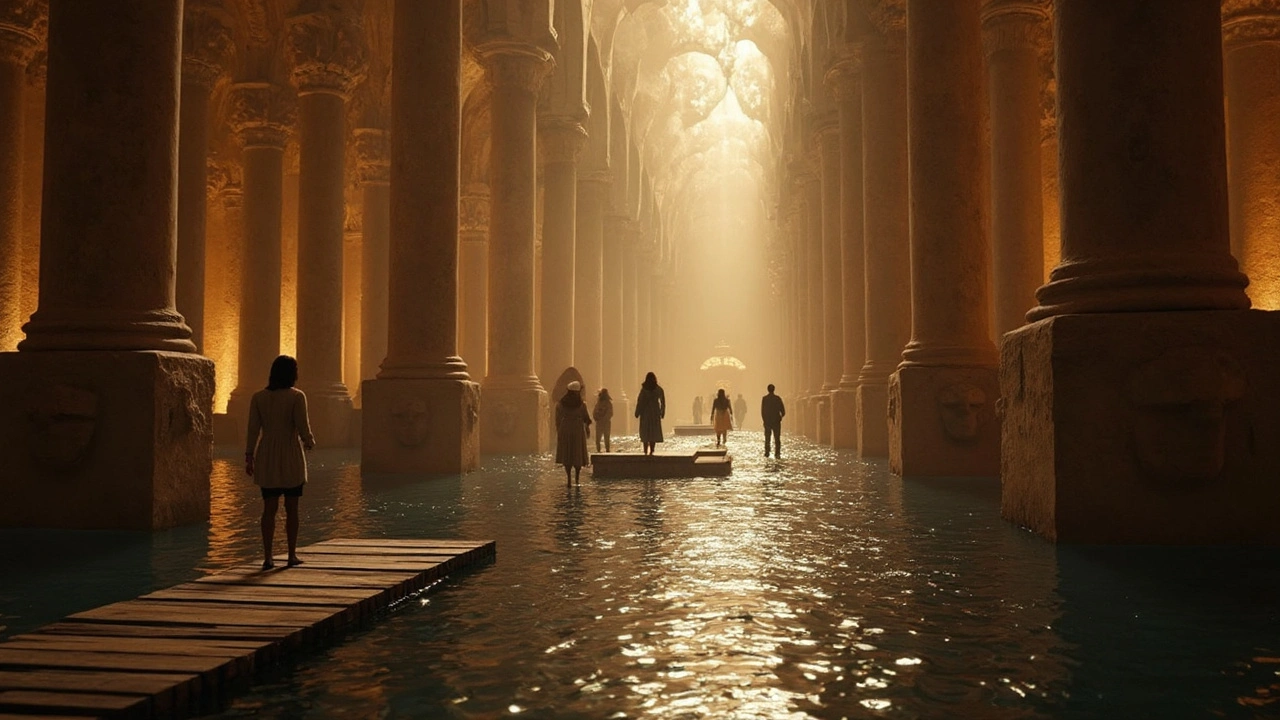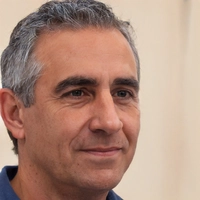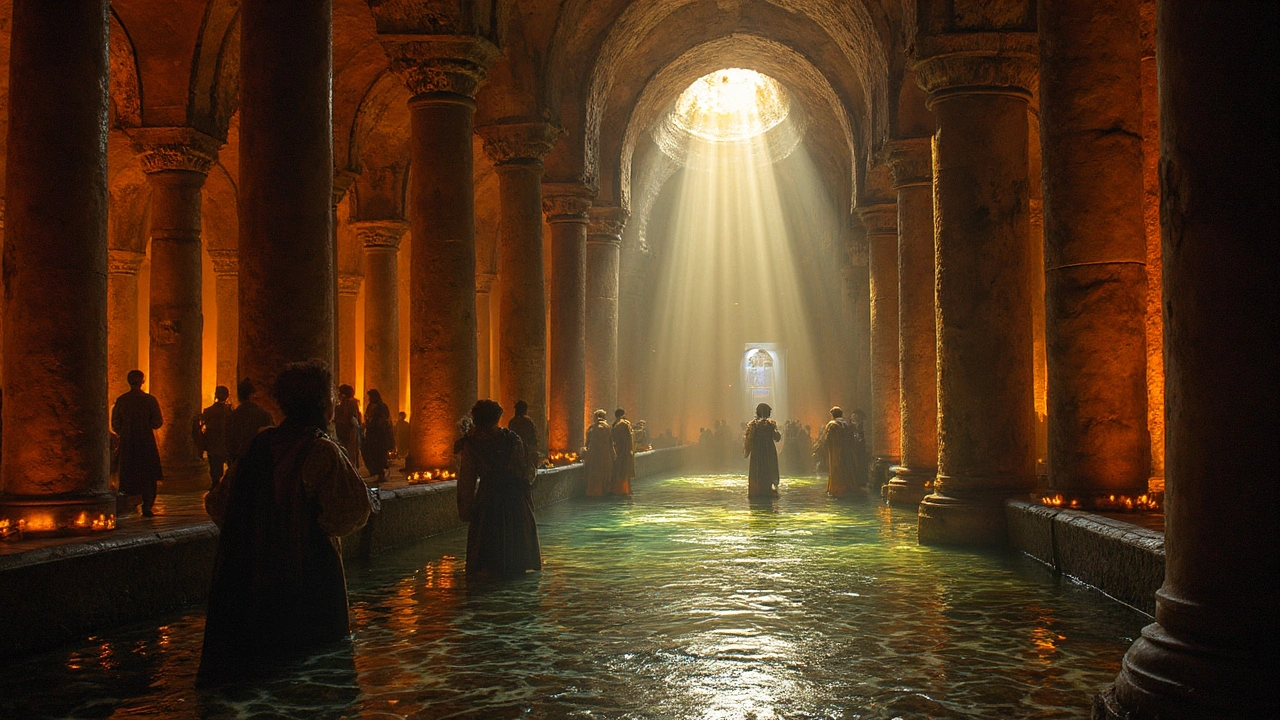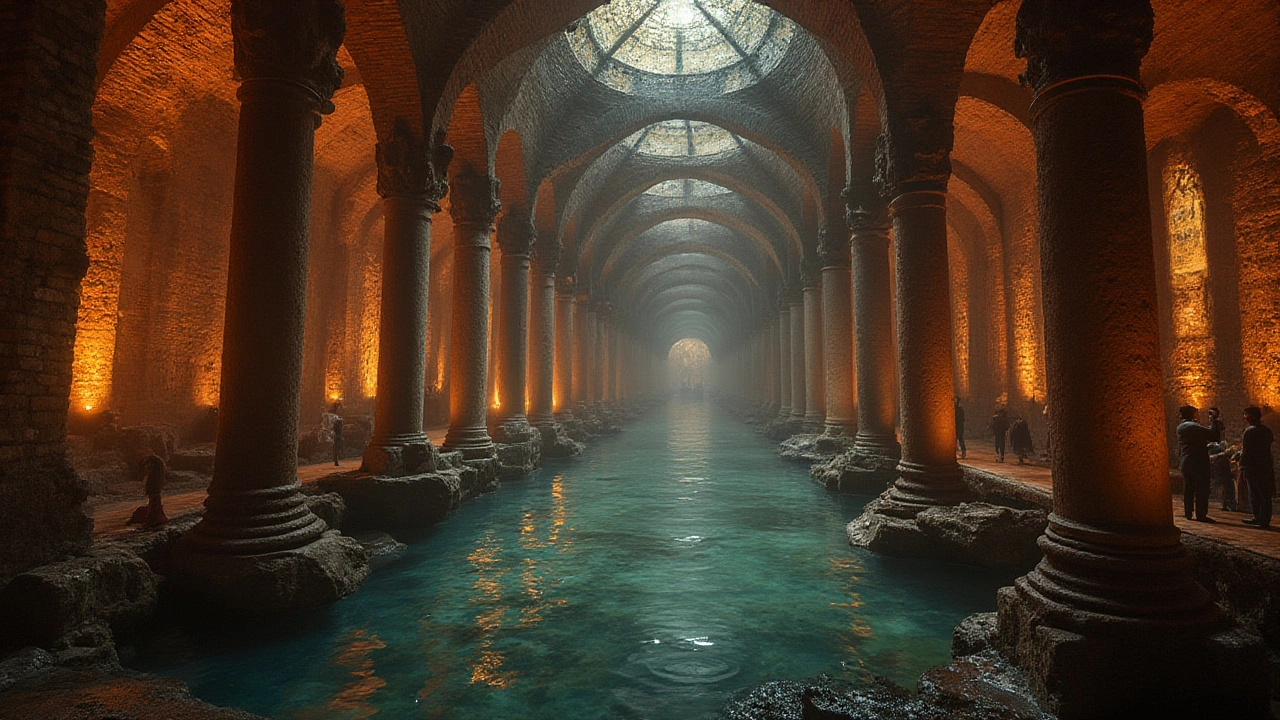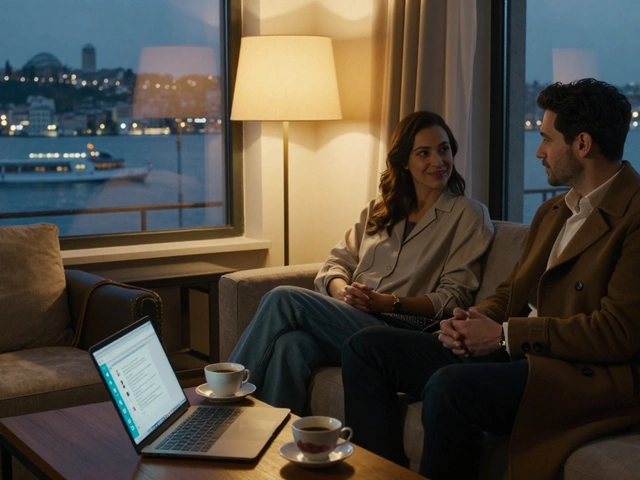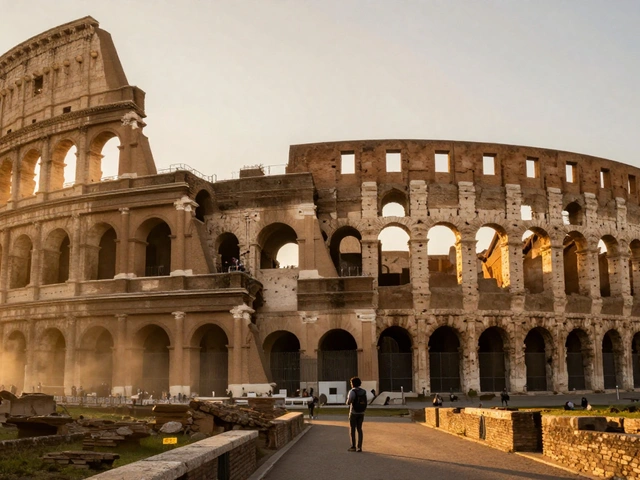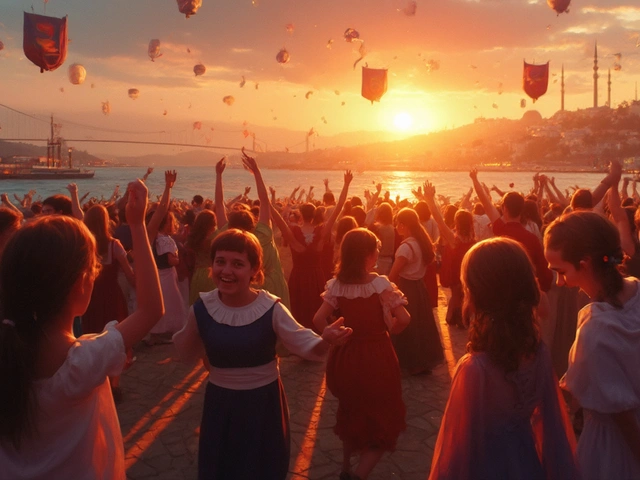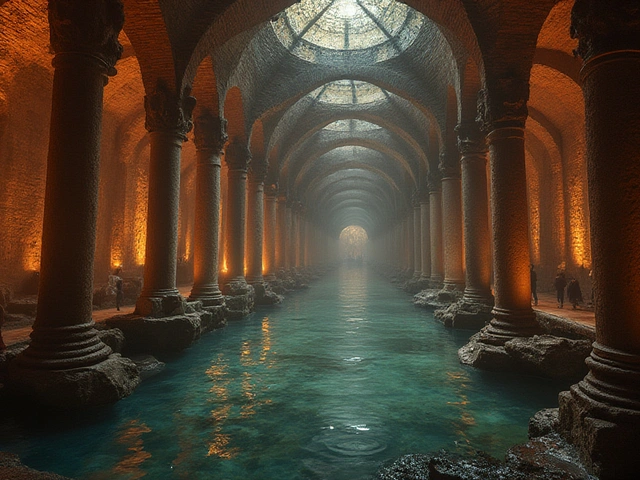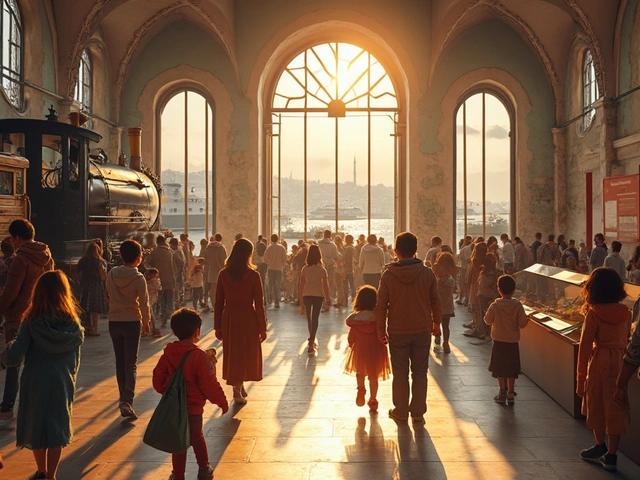Most people in Istanbul know the chaos up top—trams rushing past, the aroma of simit drifting from vendors near Hagia Sophia, crowds jostling for photos in Sultanahmet. Few realize that just a few steps away, you can slip underground and find yourself in the cold, echoing calm of the Basilica Cistern. This place is no new Instagram trend; it's been under the city's feet for over 1,500 years.
If you live here, or even if you’re just staying awhile, the Basilica Cistern doesn’t feel like a cheesy tourist trap. The humidity hits different in July—and let’s be honest, when Istanbul’s heat feels relentless, the cistern’s cool air is straight-up relief. More than that, the gentle sound of dripping water and moody lights instantly make you forget the chaos above.
Locals have plenty of reasons to visit, too. Maybe you’re showing visiting family around, or you just want a peaceful break before grabbing manti at a nearby lokanta. Tickets are easy to buy online now on the official "Yerebatan Sarnıcı" website—it’s miles better than queueing up with hundreds of tourists at noon. And if you pick weekdays before lunch, you’ll avoid the bus tours and get the place almost to yourself.
- Why Underground Istanbul Still Matters
- The Story Behind the Columns and Medusa Heads
- What Locals Know: Visiting The Cistern Like a Pro
- Tips for Istanbulites: Making the Most of Your Trip
Why Underground Istanbul Still Matters
Take a look around Sultanahmet, and you’ll see crowded museums and old mosques. Still, the real story of the city hides below street level. The Basilica Cistern has been here since 532, built during Emperor Justinian’s rule. They actually constructed it to store water for the Great Palace and the massive population living right around the Hippodrome. Back then, Istanbul wasn’t just a stop for tourists; it was the beating heart of the Byzantine Empire.
Even today, this ancient tank holds a mirror up to Istanbul’s long habit of making something out of leftovers and adapting to every challenge. The columns here? They hauled some of them over from ruined temples across the empire. They didn’t let anything go to waste—the perfect Istanbul mentality.
Folks who grew up in the city often forget the cistern is more than a sightseeing spot. It helped Istanbul survive sieges, fires, and even earthquakes by giving people access to water when it was needed the most. As Turkish historian İlber Ortaylı once put it:
“Yerebatan Sarnıcı is the city’s insurance policy, quietly keeping the city alive through centuries of chaos.”
This isn’t just about history. Over the years, Istanbul’s leaders kept restoring and reopening the cistern, even turning it into a unique event space. Local art shows, photography exhibitions, and even concerts happen here sometimes—a huge change from just being a backdrop for James Bond movies.
If you ask long-time Istanbul residents, they’ll tell you that the city keeps burying layers of itself. Construction workers still find old streets, coins, and sometimes tiny cisterns just digging foundations for apartments in Karaköy or Balat. So much of what makes the city tick is still out of sight, right below everyone’s feet.
The Story Behind the Columns and Medusa Heads
Walking into the Basilica Cistern, the first thing that grabs you are those endless rows of marble columns—336 to be exact. They aren’t just for show. Each column held up the giant ceiling above, making sure the cistern could store enough water for the entire old city, even during tough times like sieges. Most columns are over eight meters tall, and few actually match. Why? Workers pulled pieces from older Roman buildings scattered around the city, so you spot all sorts of designs and styles if you pay attention.
Now, let’s talk about those famous Medusa heads in the far corner. Both act as bases for two columns, and nobody honestly knows why they ended up here or why one is upside down and the other is on its side. Some experts guess it was just about reusing old stones. Others say putting Medusa’s face sideways or upside down killed her mythical ‘petrifying’ powers. Either way, it’s become a wild photo spot, and even locals can’t resist snapping shots next to them. You’ll see school kids daring each other to touch the water nearby, believing in a bit of old superstition passed down through families.
If you’re visiting, take a moment to look for graffiti on the columns—some marks are as old as the Ottoman era. Also, don’t miss the “Hen’s Eye” column, with tears carved into the surface. People believe it honors the workers who died building the place, and you’ll see visitors—especially Istanbulites on field trips—secretly making wishes as they pass.
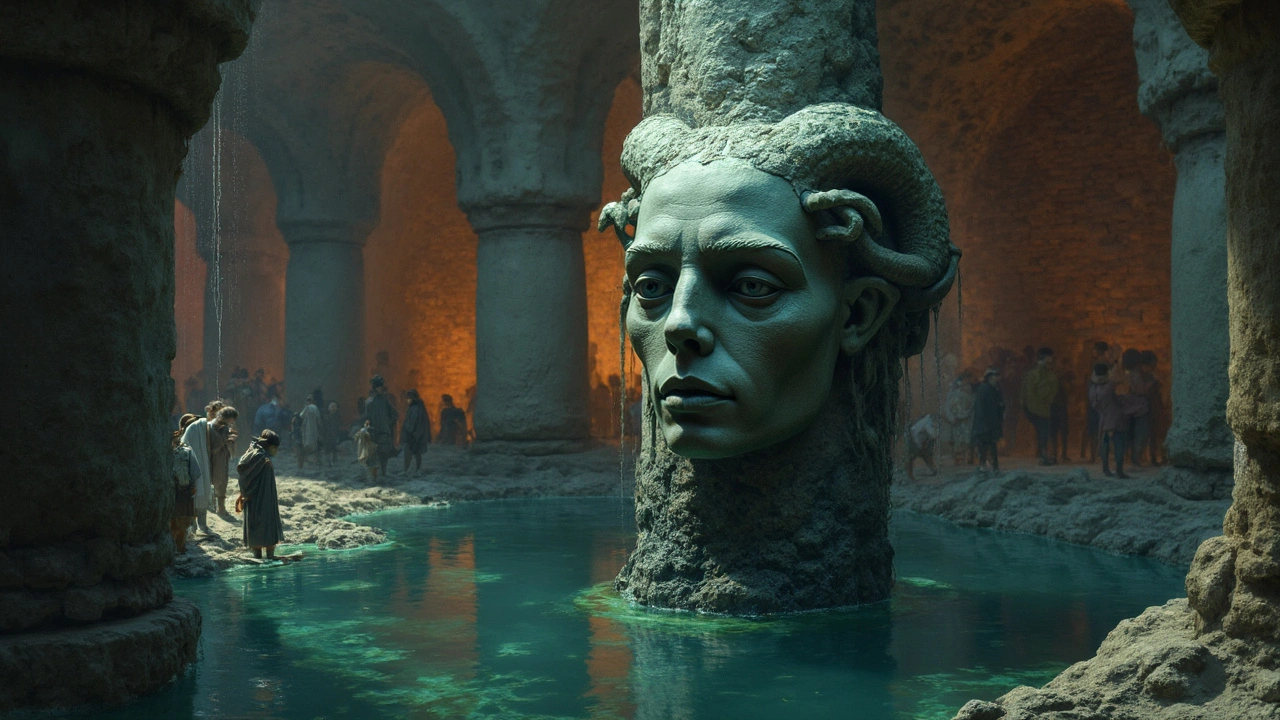
What Locals Know: Visiting The Cistern Like a Pro
If you want to see the Basilica Cistern the smart way, you’ve got to do it the Istanbulite way. First, don’t even think about turning up at peak hours mid-afternoon on a Saturday—unless you love waiting in line with school groups and snapping pics with a hundred strangers in the background. Most locals hit it early morning or around late afternoon after the bus tours have cleared out.
Get your ticket online from the official “Yerebatan Sarnıcı” site, and you can walk right past the crowd to the main gate. Keep your HES code ready if rules change—during busy holiday weeks like Bayram, they sometimes still check, especially when there’s a spike in visitors.
Dress for the space. It might feel cool down below, but those stairs are steep and worn. Sneakers or sturdy shoes are a win. If you’re keen on photos, the best shots come when you slow your pace and wait out the clusters of visitors. Locals suggest heading straight to the Medusa columns at the back first before looping around, since it’s emptier near the opening hour. Then, double back when the crowds move through.
Let’s talk about accessibility. The main entrance has stairs, so if you or your guest needs step-free access, there’s a ramped entrance on the side. The staff at the door will point it out if you ask in Turkish. Watching your step is key—the walkway sometimes gets damp and slippery, especially in winter or after heavy rain.
Wondering how busy it gets? Here’s what regular visitors and local guides say:
| Time of Day | Average Wait (minutes) | Visitor Density |
|---|---|---|
| Early Morning (9-10am) | 5-10 | Low |
| Late Afternoon (4-5pm) | 10-15 | Moderate |
| Midday (12-2pm) | 20-30 | High |
Grab your Museum Card if you have one. While not always valid for special events or temporary cistern exhibits, it’s handy for skipping ticket lines at most Istanbul spots. Remember, flash photography is off-limits—guards are quick to remind anyone who forgets.
Hungry afterwards? Locals head to the small dürüm place on Alemdar Caddesi or Saray Muhallebicisi for rice pudding. If you want real Turkish coffee, wander over to Hafız Mustafa for an old-school break. It’s easy to blend a cistern visit with your other Sultanahmet stops—Hagia Sophia, the Blue Mosque, and the Archaeological Museums are ten minutes’ walk at most.
Tips for Istanbulites: Making the Most of Your Trip
Snagging the most out of your visit to the Basilica Cistern is all about planning a bit, and knowing some local tricks. First, forget weekends and public holidays—crowds can get wild. Instead, if your schedule is flexible, swing by right when it opens, usually around 9am, or come late in the day for a quieter vibe. With Istanbul Card discounts sometimes offered for residents, check the latest on the Yerebatan website before you go.
Wondering what to bring? It's chilly down there, even in August. Definitely bring a light jacket. The floors are often wet and slippery, so flat shoes with a good grip make life easier. Photography is allowed, but leave the tripod at home to avoid blocking narrow walkways—security's strict about this.
- The Medusa heads are at the far northwest corner, where most folks crowd for photos—visit them first before the groups roll in.
- Strollers are awkward here due to lots of stairs; small kids will need to be carried.
- Audio guides are available at the entrance and are worth it if you want extra details, especially about the lesser-known columns.
- Free WiFi is patchy, so preload your e-ticket and any translation apps if needed.
- If you’re looking for a bit of peace, there are a few benches along the main walkway where you can listen to the cistern’s famous acoustics—concerts are even held here sometimes, so check for posted events around Istanbul Music Festival time in June.
Prices go up each year, especially since more updates have been made after 2022. Here’s the current 2025 rate snapshot for easy reference:
| Visitor Type | Entry Fee (TRY) |
|---|---|
| Local Resident (with ID) | 250 |
| Foreign Visitor | 650 |
| Children under 7 | Free |
Planning lunch nearby? The cistern’s exit drops you right by Alemdar Street. Locals often grab tea and börek at Namlı Pastırmacı or chill on the terrace at Seven Hills for a Bosphorus view. If you need gifts, avoid overpriced stalls at the exit and walk down to Arasta Bazaar instead.
Finally—especially on rainy days—a lot of folks pack inside, so keep an eye on the time and treat the visit as a quick, peaceful escape rather than a long sightseeing marathon.
